#blind characters
Note
Would it be offensive to draw a blind characters with different colored pupils as a visual cue for their blindness? I don't want to perpetuate any harmful stereotypes, but I also want it to be clear that one of the characters in my webcomic is blind.
If this person has cataracts, infection of the cornea, or some other reason that one or both of their eyes are that way, that would probably be fine. However, not all blind people have eyes that look noticeably different without a reason as to why, even as cataracts are common causes of blindness. Contrary to popular belief, not all blind people have cloudy eyes.
I wonder if people are looking for cloudy eyes when they say we don’t look blind . . .
Generally, unless there is a reason your character would have noticeably different eyes, there is probably no need to draw them any differently.
You may instead enjoy finding other creative ways to show their blindness. Maybe they use a cane or other assistive devices. Maybe they use Braille or large print. Maybe they read regular print with frequent breaks and eye massaging.
Generally, ask yourself if you are making choices because they feel right or because there is a solid reason behind them. In this case, are you drawing a character with cataracts or did you unintentionally fall into the idea that blind people’s eyes just look different.
The point is that some blind people do have noticeably blind eyes due to discoloration or cloudiness. However, when drawing blind characters, consider why you are drawing them that way. Be intentional.
I hope this helps. Good luck with your comic!
507 notes
·
View notes
Text
Writing Blind/Low Vision Characters
Time for another one of these I have decided! As always, this is based on personal experience with blind low vision people, classwork, and research. I do wear glasses, but I am not blind/low vision and this is not my lived experience. Please feel free to question, correct, and comment, as long as you are respectful! Thanks so much for reading :) On to the good stuff!
Vocab
Blind describes a person who has very little to no vision. This can be written with a lowercase or capital b (blind or Blind). Blind does not always mean no vision. It is medically defined as having vision of less than 20/200 in the better eye. Someone can be able to distinguish color, light and dark, or shapes, and still be blind.
blind refers to the medical condition of having little to no vision.
Blind (note the capital b) refers to the sociocultural experience of being a nonseeing person in a predominantly vision-based society. This distinction is newer and less common than with the Deaf community, but is becoming more popular, particularly with DeafBlind people. As always, the important thing is respecting what people identify as and want to be called
Visually impaired is a term that covers the spectrum of vision differences.
The term does not include disorders that affect one or more of the “basic psychological processes.” What this means is that though vision or the use of visual information may be impaired, if the nature of that impairment is not related to the structure of the eye, it would not be described as “visual impairment.” Examples include perceptual disabilities, brain injuries, or dyslexia.
B/VI is an acronym, standing for Blind/Visually Impaired, that can be used to refer to the community as a whole.
Low vision describes a person who is not fully blind, but whose level of vision is significantly impaired. More technically, this refers to vision that cannot be corrected through medical or surgical procedures, or conventional eyeglasses.
Legally blind (in the USA) refers to an individual whose vision is affected beyond what glasses can correct. This is a bit difficult to describe in writing but: If the strongest prescription possible cannot bring that person’s vision up to 20/20, they are legally blind. This is not the same as having no vision.
Deafblind or DeafBlind refers to an individual with any combination of vision and Deaf gain/hearing loss, ranging from mild to profound Deaf gain/hearing loss and from low vision to total blindness.
Visual acuity refers to clarity of vision and is the source of numbers like 20/20, 20/30, etc. This is another one that’s weird to describe so stick with me. My vision is about 20/40 (last I went to the eye doctor lol) which means that I see at 20 feet what someone with 20/20 vision sees at 20 feet. The top number is always 20, and refers to the 20/20 standard, while the lower number describes the visual acuity of the person in question. If their visual acuity is 20/10, that means they see at ten feet what a person with 20/20 vision would see at 20 feet. If they see at 20 feet what a person with 20/20 vision would see at 200 feet, they are medically considered blind.
Visual functioning is (basically) a measure of how well a person can use visual information in completing tasks. This is assessed a number of different ways.
Residual vision is another way of referring to the functional vision of a person with low vision or blindness.
I’m not going to go through all the different kinds of blindness and eye conditions, because that would take too long, and this is already a pretty long vocab section. But there are lots of different kinds of conditions and disabilities affecting eyes and vision! Please explore them :)
Blind Culture?
Is there Blind culture in the same way that there is Deaf culture? Difficult to say. It’s an ongoing debate, and I’m going to briefly address each side, and then leave it up to you to research further how this might affect your character and your story.
Historically, the blind community have rejected the idea that blind individuals have a shared culture. The reasons for this are very well outlined in this letter, which I highly recommend reading. To summarize it here: Blind people are not isolated from sighted people in the same way that Deaf people have been historically isolated from hearing people. The reason for this is generally acknowledged to be the lack of, or existence of, a language barrier. Blind people use the same language as the sighted people around them, while Deaf people have used signed language as opposed to spoken language. Where no language barrier exists, this position argues, no separate culture forms or needs to form.
On the other hand - there are certainly experiences that are shared by people across the visually impaired spectrum that fully sighted people do not have. Blind or low vision people access and interpret the world in different ways. There is, analogous to Deaf communities, a history of blind or low vision children being educated separately from sighted children, and of discrimination throughout the lifespan that has isolated visually impaired people from sighted society.
What does all of this mean? It means that there is less consensus about what it means to be visually impaired, and what values or traditions unite that experience. It means that there is less of a framework for how your visually impaired character might relate to other visually impaired characters or their broader community. I highly encourage further exploration within your own story, as well as making sure that whatever choices you’re making about the character’s relationship to their vision is grounded in conscious choice and research. Just because there are no easy answers about a collective blind culture does not mean that a blind character can be written the same as a sighted character but without the vision.
Assistive Technology
Assistive technology (as a reminder, this is not specific to visual impairments) refers to pretty much anything used to make the lives of disabled people easier.
Official American government definition is: "Any item, piece of equipment or product system, whether acquired commercially off the shelf, modified, or customized, that is used to increase, maintain, or improve the functional capabilities of children with disabilities. The term does not include a medical device that is surgically implanted, or the replacement of such device."
Braille is a tactile system of writing in which raised dots represent letters, numbers, and punctuation. More on this later.
A screen reader is a software program that either reads written text on a screen aloud, or produces a Braille display.
Speech-to-text programs are software programs that...convert speech to text.
Text-to-speech or TTS are programs that convert written text into spoken speech. These were also commonly used on landline phones by d/Deaf people before text messaging became commonplace.
Seeing Eye dogs are service dogs that are trained to help their blind owners move and navigate independently.
White canes are white canes with a red stripe. These are both navigational tools for B/VI people, and used to communicate to others that the person carrying it is B/VI. Accordingly, it is illegal in some US states to carry a white cane if you are not visually impaired. Only 2-8% of B/VI people actually use them, though, and it requires dedicated practice to use them effectively. They are designed to vibrate differently when they come in contact with different types of surfaces, and proper practice can help cane users distinguish between different obstacles.
Braille and the Braille Literacy Crisis
Braille, as mentioned before, is a tactile way of writing, which helps B/VI people read and write effectively. I’m not going to do an exhaustive explanation, but essentially, a different combination of raised dots represents each letter of the written alphabet. The sentence I’m writing, rewritten in Braille, would have the exact same words and structure, but would be expressed in raised dots. There are abbreviated forms that are less commonly used and may be used by more skilled readers or those reading texts with specialized, space-saving abbreviations.
Less than 10 percent of legally blind in the US can read Braille, and only 10 percent of legally blind children are currently learning it. This is a huge problem. Over 70% of blind adults are unemployed, and up to 50% of blind students drop out of high school. There is a strong, scientifically supported link between literacy and employment.
Technology should supplement literacy, not replace it. Screen readers and text-to-speech are great tools, but are not an adequate replacement for literacy.
Reading English text is not always the best possible method of reading. The misguided belief that reading Braille is isolating and stigmatizing leads many to push reading text over reading Braille, even when this is inappropriate or even impossible. Some children achieve higher levels of literacy through reading Braille.
Implications for your writing: Can your character read Braille? Why, or why not? What impact does their illiteracy have on their life?
Rethink
I’ve tried a couple different headings here cuz as always, don’t want to tell people unequivocally not to write things. But these are things you should really think hard about before you include them in your writing.
So, things to rethink:
Overused tropes for B/VI characters:
Blind seer/blind mystic
Innocent, pure, noble, sweet etc.
Bumbling oaf B/VI person
Feeling people’s faces as a way to “know what they look like”
Does not happen in real life, more of a stereotype/sighted person’s fantasy
“Helen Keller didn’t exist” TikTok conspiracy theory (not a writing thing but a pet peeve I can’t not mention)
This is ableist. The only reason people think she wasn’t able to accomplish things is because she was deafblind and that’s fucking bullshit. It is not a cute silly TikTok joke. It’s ableism, and it’s disgusting.
Blindness negating power/ability.
This can be anything from an actual superpower (X-Men) to a technological advance (Star Trek) to a supernatural ability (Avatar: The Last Airbender.)
In real life, this could be having someone with other senses that compensate to an unrealistic degree, or echolocation, which, while it proves successful for some people, is hard, takes a ton of effort, and doesn’t work for everyone.
Resources/Recommendations
Please add recommendations in reblogs and comments! I really haven’t watched a lot of TV or movies that have blind characters, which sucks :/
Haben: The Deafblind Woman Who Conquered Harvard Law By Haben Girma is an autobiography of a deafblind woman that is incredibly well written and discusses independence and activism.
The World I Live In by Helen Keller describes life as a deafblind individual and is really powerful and beautiful.
#disability writing guide#writing disabled characters#writing blind characters#writing blindness#low vision#blindness#blind characters#disability representation#writing disability
281 notes
·
View notes
Note
Im sorry if this is a dumb question but how would someone use a white cane to locate and go down stairs, specifically if they are at the top of the stairwell. I'm asking because im the story Im writing a blind character (who is the protagonist btw) has to go downstairs to reunite with his younger sibling but he cant take the elevators because the power is out (and there's a monster chasing after him so that doesnt help) I want to make sure I write this scene accurately, especially since I am sighted and do not use a white cane myself. Thanks in advance and sorry again if this is a dumb question.
Hi! Not a dumb question at all. I will do my best to explain it in writing. Most blind people are perfectly comfortable using stairs if they have cane skills, so I appreciate that you aren’t shying away from having your blind character using them.
Finding the top step is super easy. You just tap or slide the tip of your cane around until you find the place where the floor drops off, and then briefly slide the tip of the cane along the edge of the step so you can orient your body to go down the stairs at the right angle and not accidentally go down diagonal or anything like that.
Actually going down the stairs with a white cane is pretty easy as well, because the nice part about using a white cane as opposed to a guide dog or a low vision aid is that the cane can give you an exact idea of the size and depth of the step, so you aren’t left wondering until you actually step down.
The tip of your cane should always be two steps ahead of you. This applies for going up as well as down. So if the character is standing at the top of the steps, he would put his cane down on the step in front of him, which will give him a clear idea of the height and depth of the step, and then put the tip down one more step beyond that. As he steps down, the tip of the cane should move down to the next step beyond that, so every time he steps, the cane is still two steps ahead. He will know he is at the bottom when his cane slides forward on the floor of the landing instead of finding another step dropoff. Having the cane two full steps ahead will give him enough time to slow down when he finds the bottom with his cane so he doesn’t try to step down again onto flat floor.
In case you are also interested in how he could go up the stairs as well, the two-step rule still applies, but it’s slightly different. Every time he takes a step up, he should be tapping his cane against the front of the step two steps up. When he is approaching the top, his cane won’t have another front of a step to tap, so it will just swing out into open air, which is how he will know he is approaching the top and can slow down for the last two steps and not accidentally try to step up again onto empty air.
If he has been using a cane for a long time, this should feel totally natural and shouldn’t slow him down at all. It becomes muscle memory and second nature pretty quickly, so he should be able to get down the stairs as fast as he needs to without incident or worry.
I hope this made sense!
— Mod Lane
#mod Lane#anonymous#white canes#mobility aids#blind characters#writing blind characters#disabled characters#writing disabled characters#blindness#blind
233 notes
·
View notes
Text
Writing Blind & Visually Impaired Characters
A while back, someone asked me if I could share some of the resources I use. I figured maybe other people might find it useful as well! ^_^ Due to computer switches I could only trawl through the last ~5 years of research, but it’s still a fair collection.
(Obligatory disclaimer: I am not visually impaired! I just try to listen to people who are. The vast majority of these are written by and/or for people with visual impairments.)
.
Vocab
American Printing House key definitions — Wayback machine
.
Blogs, posts, essays, and speeches by folk with visual impairments
General sites:
Mimzy Writing Online (masterpost for writing blind characters) — Wayback machine
Where’s Your Dog — Wayback machine
Albinism Up Close — Wayback machine
Specific posts:
Why blindfolding yourself is misleading:
NFB member John Pere’s video & transcript — Wayback machine
Graduate researcher Arielle Silverman’s video & transcript — Wayback machine
Blind physician — Wayback machine
Missing eye / monocular vision — Wayback machine
Driving with albinism — Wayback machine (chronological series of posts, next post link is at the bottom)
.
Posts of unknown/mixed authorship
Writing blind characters (tumblr thread) — Wayback machine
.
Sighted guidance
How to Be a Sighted Guide by Vision Loss Resources — Wayback machine
.
Long cane use
Care and Feeding of the White Cane: Instructions in Cane Travel for Blind People by Thomas Bickford, hosted on the NFB website — Wayback machine
.
Orientation and Mobility
This is the term for specific training around navigating the world with a visual impairment. It will be a useful search term for you.
Additionally, I have purchased the O&M training course Step By Step that was published by the American Printing House. The actual video training modules are incredibly clunky to navigate through, and personally I’ve never had the patience. I’m also not comfortable redistributing their whole product like that.
But… the pdf study guides from the program are useful on their own, and those I will share! (Especially since they used to be available for free on the APH website. >_>;)
These are from the second edition.
O&M Training study guides (Internet Archive access)
.
Careers
American Printing House career connect — Wayback machine
.
Cooking
NFB: Suggestions for the Blind Cook — Wayback machine
APH: Safe Cooking Techniques — Wayback machine
BBC: Article about a blind Master Chef contestant — Wayback machine
.
Visualization tools
For remnant sight and color blindness.
Visual acuity simulator — Wayback machine (icons at the top switch between vision charts & illustrative photos, bar at the bottom adjusts acuity)
Color blindness simulator — Wayback machine
.
Thinking about disability
These aren’t specifically about visual impairment, and include other physical disabilities as well as autism.
But they’re important voices to hear, and can be useful for framing your understanding and general approach.
"Don't Mourn For Us" by Jim Sinclair — Wayback machine
“Confessions of a Bitter Cripple" by Elizabeth Barnes — Wayback machine
"If you can do X, why can't you do Y?" by Mel Baggs — Wayback machine
People can adapt to and accommodate for more than you might think (tumblr thread) — Wayback machine
.
And finally, some related tags on my personal blog: Disability | Disability rights | Writing resources: disability | Accessibility
#writing blind characters#blindness#visual impairment#blind characters#representation in fiction#writing resources#orientation and mobility#can you tell that I’ve been v. sad about masterposts with broken links in the past sldkfhsdg#the wayback machine isn’t a perfect solution but it’s better than nothing. Anyway! Please let me know if any of these links seem broken!#long canes#sighted guides#krtart#resources#masterposts#krt talks
25 notes
·
View notes
Text
I may not be able to draw well, BUT
I can do thissss


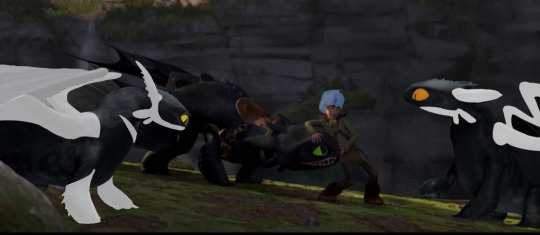


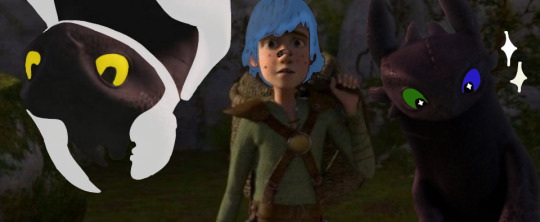
This was all on ibis paint and ism not even sure how I managed to do some of these
8 notes
·
View notes
Text
The Labyrinth’s Archivist Book Review
The Labyrinth’s Archivist Book Review
A version of this book review for The Labyrinth’s Archivist first appeared in The Lesbrary and contains spoilers!
Summary
The Labyrinth’s Archivist is the first in the Broken Cities series. It follows Azulea, the daughter of the Head Archivist and granddaughter of the former Head Archivist. The Labyrinth contains winding paths and hallways with gates to other worlds. The Residence, which houses…
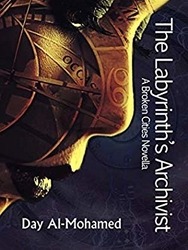
View On WordPress
#blind characters#blindness#book review#characters with disabilities#Day Al-Mohamed#main characters of color#poc authors#protagonist of color#sci-fi#science fiction
2 notes
·
View notes
Text
|| Writing Piece || Menthol
Just a short piece I did about a couple of my characters. This universe I've thrown them in isn't canonical, but my own little sandbox outside the actual novel my partner and I are writing. I told him that I wanted to write my two favorite blind characters together and he told me, "Go off, I guess."
--- --- ---
Leba sighed as he dropped down to the ground, scooting back until he was leaned up against the chilled brick of the school. This was his personal hiding spot that very few knew about, or didn’t care to tread upon because it was where the ‘bad kids’ hung out. It was conveniently located near the back lot where the students could park, just a small nook that served no actual structural purpose to the school, but had served a good purpose since entering high school.
He reached into his pocket and pulled out a pack of cigarettes. Saving up the little allowance he was given certainly served a decent purpose, though he knew there were those that he was friends with would disagree. Right as he was about to put the ‘cancer stick’ into his mouth he felt warm breath tickle his neck as a smaller body came colliding into him. He heard the clatter of what was probably a much hated cane. Leba didn’t hesitate to lift up his arm, allowing the newcomer to huddle up against his side.
“What’s up, Andrea?” He mumbled as he resumed putting the cigarette into his mouth, reaching with his only free hand to pull out his lighter and with a simple flick, lit it up. The insane cackle confirmed his assumption, but at this point, he could tell who all his friends were by scent alone. Andrea constantly smelled of dragonfruit with a slight hint of floral, her favorite perfume that her boyfriend bought her. The girl in question curled up closer to him, shoving her hands into his pocket for warmth. “You know, you could just call CPS on your fosters. You need a damn winter jacket.”
“Too much work,” Andrea whined as she moved one hand long enough to snatch the cigarette from Leba’s mouth and took a quick drag. She made a face, but the noise of disgust made him laugh. She hated the mint sticks. “I prefer the cinnamon ones you had last month. Also, Bass is bringing me some stuff his parents bought for me.” A harsh winter chill blew by and she shoved the stick back in his mouth in favor of burrowing herself into his open jacket. It was almost like she was trying to crawl between his ribs. Their height difference made him the perfect protection, so he didn’t complain much.
“When’s he gonna get here?” He inquired, finally taking a long drag, enjoying the mint lingering on his tongue and at the back of his throat. She didn’t answer, but shrugged as a response. Bass was Andrea’s boyfriend of four years and while he was a bit touched in the head, he cared deeply for the girl. It helped that his parents were just as crazy about her as he was.
Andrea used to live in a different town completely before her foster family decided she was ‘too much work’ and ‘not worth the effort’, so the system bounced her to another town entirely. Bass’ family had lived in that same town and when they got the news that Andrea was being shifted again, they moved too. The kid’s mom had said ‘it was all for the best and time for a change’. Andrea now live in a group home, not unlike the group home that Rassi lived in, but certainly an upgrade.
While Leba personally had a strong dislike for his hometown, at least Andrea stood a chance here, especially with all the friends she’s been making. Most of them had experience with the system and could manipulate it perfectly without being detected on any legal radars. He took another longer, drag of the minty nicotine and wasn’t all that surprised when it was snatched from him again.
“Rassi would have a fit if she found you smoking this shit again,” Andrea commented as she puffed the smoke into his face. He snickered, taking back the offensive stick as she smacked her lips together. “Get more cinnamon next time, asshole.”
“You know it doesn’t really matter what I smoke. She’s always going to throw a fit. Do you even remember last year?” He asked, recalling that not so fond memory of him smoking weed with his ex-boyfriend in his apartment.
“Oh, that. Ugh, I still hate you for that, even though I wasn’t there. Ilex was a fucking creep.” Andrea snorted as she too recalled the aftermath of those events.
Ilex was a dropout that decided working was better than getting an education. He and Leba were freshly broken up after dating for a short time, but still fucking on the side because they were both lonely and Leba hated dealing with depression. He would never be sure if Rassi was mad about the weed or about the sex with the ex. She had been a whirlwind of limbs and tears, screaming at him for being an idiot. Bishop, Rassi’s guard dog boyfriend, had chased Ilex out. Rassi made him swear to not do something like this again and like a fool, Leba promised. Mostly because he hated hearing her cry and feeling how her tears burned his skin.
A nudge to the ribs pulled him from the memory. “Hey,” Andrea mumbled, “I know you probably got class in a little bit, but would you stay until Bass gets here? He’s always late.” Leba didn’t verbally respond and instead tightened his hold on the girl, pulling her closer, if that was even possible at this point.
“Blind buddies, am I right?” He joked softly. Andrea broke out into a fit of manic giggles and nodded against his shoulder.
#original writing#original art#creative writing#character study#short piece#blind characters#bad habits#don't smoke kids#it's bad for you#kind of bad language
0 notes
Text

stillness in these waking hours
instagram | shop | commission info
#artists on tumblr#animated illustration#2d animation#backgrounds#digital art#animated gif#environment illustration#myillust#cozy#office#workspace#rain#gifs#this was inspired by how i've been having to stay up all night to get some stuff done and one day#i was just looking out the window and watched the sunrise through the grey rainy clouds c':#everything felt so quiet and still - it took a lot out of me to not animate more things in this one heh#i love how it turned out - the serene-ness and stillness of it all really captured the feeling i wanted to recreate :')#(also this isn't my irl workspace lol maybe the blinds and as usual this is just my character not me)#but i nonetheless hope you'll like this! <3 wishing you a lovely day or night ahead!
6K notes
·
View notes
Text

i love it when ppl put kirby into desserts
#kirby#hoshi no kirby#kirby of the stars#kirby fanart#oh no i don’t know how to tag for kirby i’m so sorry kirby fans (i’m kirby fans)#daeyumi art#thanks for the request!#anyways fun fact i can’t stop buying the re-ment kirby blind box sets where he & his friends are sculpted with all the lil themed foods#agh it’s way too cute & kirby is one of my absolute fave characters ever#anyways i have too many kirby figures now cuz they’re all so cute & now i have to be really picky about what kirby figures i buy lol
2K notes
·
View notes
Text
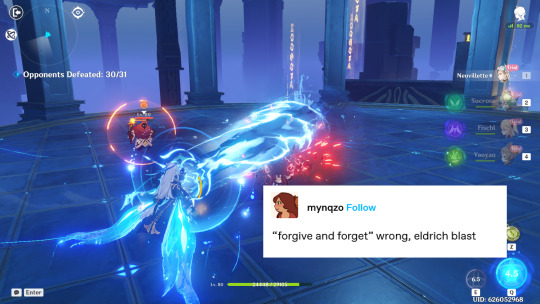
#went into his character trial blind and this was all i could think about#genshin impact#neuvillette#text post meme#aphelion.txt
4K notes
·
View notes
Note
Hi! I saw your posts about how important it is to have multiple blind characters. So far, only one of my main characters is blind (she had an eye infection when she was a baby.) I also have an important side character who has low vision due to albinism. What would be some good ways to include more blind characters?
Including More Blind Characters in Your Story
Hi,
Sounds like you have two already.
I think this post would help. It has examples from an alternative universe I came up with that includes many blind characters and how they relate to each other.
Also, consider where your characters might meet other blind folks. At school? At university? Inquiring about accessible reading materials? Maybe they meet during orientation and mobility, an accessible cooking class, or at a party. Maybe they are introduced through mutual friends. Maybe the village gossip tells them about the other. Maybe they use magic to connect to other blind people in the areas.
Here are some posts o that might be helpful, one on writing multiple blind characters, one of which includes examples, and a helpful reblog about giving your blind characters a community.
Here is a post on whether multiple blind characters is unrealistic or not. Spoiler, it isn’t. But I hope this will help you in some way.
By having two characters, you’re already doing great in my opinion. Just focus on their characterization and development as people and you are golden!
#blind#blind characters#writing blind characters#writing more than one blind character#writing multiple blind characters#ask
327 notes
·
View notes
Text

the man trained by the shimotsuki since childhood, the mind behind the three sword style, the demon pirate hunter, vice captain of the Strawhat Pirates,
easily stopped with a hand on his shoulder by his captain (currently in a silly hungry vibe)
#he blink#HE'S SO CUTE#help#zolu#zoro#luffy#one piece live action#one piece#roronoa zoro#monkey d. luffy#my thinking is that zoro's survivalist (glorified anxiety) instincts found some peace in Luffy's presence at this point in the opla#any other person who tries to pull zoro back by the shoulder the way luffy just did? gone. zoro is suddenly fruit ninja again#any other person who even tries to REACH for him gets sliced n diced#especially to reach from behind him which is a general blind spot#someone with zoro's training would know how to track what happens in his blind spots#but someone with zoro's heart recognized luffy and said 'oy chill he's good he's the homie'#outside of his fight or flight mode#zoro feels safe enough now (in Luffy's presence) to become his true self#A Tired Stormcloud Character#who's going to tell opla zoro this is only the start#Strawhat shenanigans#on another note his earrings are so fkn pretty like *makes grabby hands*
6K notes
·
View notes
Note
heyy so im writing a character that's blind and she uses a white cane, and during one of her missions (she's part of a spy ring) she's gonna get hurted and is gonna need to use a cane (a walking stick) permanently. so how would she act in this situation where she basically needs to different types of cane to keep her mobility? or do you have any other sugestion about what to do in this situation?
Hi! Thanks for asking.
In this situation, she would likely need to have two canes; both a white cane and a walking stick, used in different hands. The two canes are so different that one came can’t really serve both functions, so she’d need to have one of each. This would of course leave her without a free hand most of the time, so she may want to prioritize using backpacks more than other kinds of bags that would require a free hand. It may be useful to research the experiences of double crutch users to get more ideas for how she would manage things with no free hands.
Depending on exactly what her physical support needs are, she might instead use a guide dog that has also been trained for mobility assistance or counterbalancing. Most guide dog schools can provide some cross training on tasks for additional disabilities, though you will want to research mobility assistance dogs to see if the kinds of tasks a dog can do would be useful for her particular disability. If her particular needs will be met by mobility tasks, then it’s entirely possible to have a guide dog that is also trained in those additional tasks.
Using a guide dog that is cross trained for mobility support would solve the no free hands problem since it only requires one hand, but a guide dog is definitely a very different travel style from a white cane, so you will want to really think about if she as a person would want to switch to a guide dog travel style. It’s a very personal and individual choice, and one is not inherently better than the other, so the switch shouldn’t be made casually. It’s entirely possible that she would be interested in switching to a guide dog lifestyle, but it’s also entirely possible that she would much prefer to use her white cane along with another mobility aid, instead.
One other option could be to use a white cane with a wheelchair depending on the nature of her injury. It sounds like something like a walking stick or mobility assistance dog would be better based on your ask, but if there is more information that might make a wheelchair relevant, that can also be an option. It can be somewhat harder to use a white cane with a manual wheelchair, so many people prefer to use a power chair with a white cane, but a manual chair can absolutely be done if a manual chair would suit her lifestyle better.
If there are any blind and multiply disabled people or physically disabled people (especially those who use mobility assistance service dogs) who would like to chime in in the notes, please do!
Hope this helps!
— mod Lane
#mod Lane#guide animals#blindness#writing blind characters#blind characters#mobility aids#white canes#canes#wheelchairs#service animals#mobility assistance dogs#writing multiply disabled characters
147 notes
·
View notes
Note
Ok ok hear me out: it could end in tragedy,, AND have a happy ending. The attempt(s) on Machete’s life force him to flee, he doesn’t even have the chance to find Vasco. Cue gay longing for at least a few years while Machete despairs over the loss of his love, his life, his status. He and Vasco only reunite (again) in their later years. Their relationship is forever flavored with loss and loneliness, but that only means they savor every moment that much more
I also I would like to see them as old men. Vasco would be so droopy :)
You gave me such old dog brainworms.

#Vasco would go white and gray in the face like an old golden retriever and get wrinklier#his golden fur would get shaggy and gradually lose it's shine#at some point he wouldn't be allowed to ride horses anymore which would upset him greatly#he'd get rheumatism and bad back and his hearing would worsen but he'd be an active and jolly type of grandpa#Machete would mellow out considerably if he managed to retire#I'd like to believe he'd be able to find some sort of inner peace in his later years#even in his prime his eyesight was bad and he spent his entire life fearing going blind so if he eventually got cataracts and lost most of#his remaining vision he'd probably be relatively fine with it as it was something he knew to expect#and he would have Vasco to look after him#his left ear had trouble staying upright when he was a pup so it would be kind of funny if it started drooping again#answered#anonymous#Vasco#Machete#own art#own characters#this isn't canon or anything I'm just musing
3K notes
·
View notes
Text
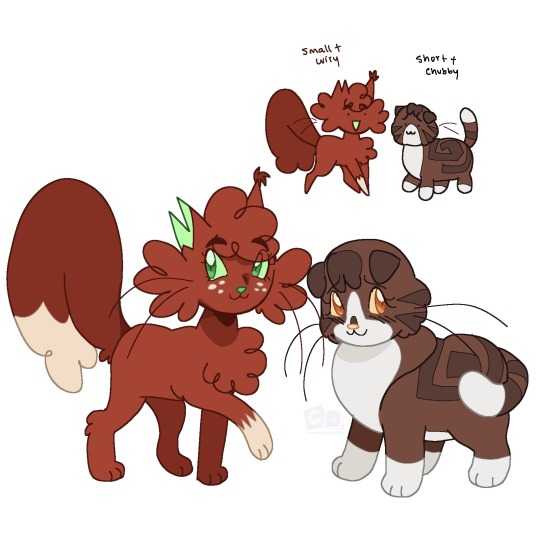
these squilf and leafpool designs came to me in a dream…. what do we think
#how was i so blind before#anyways i probably won’t fully change them (yet) but#we will see#my art#illustration#art#fan art#leafpool#squirrelflight#squilf#warrior cats#erin hunter warriors#warrior cats fanart#warrior cat#wc designs#character design#character redesign
1K notes
·
View notes
Text
being an adult means we can buy or make as much self-indulgent shit (as we can afford) and unironically have trinkets of our fave things cause our teen years was bullied for liking things and hiding/denying we were ever neurodivergent to the point of suicide. sucks for anyone that thinks its weird cringe but I'm going to try and allow myself to love myself in little ways now
#wish i could tell younger me that i wasnt fucked up i was just autistic#even if youre not nd i still think having things you enjoy around you is important especially for your space#so i make a notable effort to get fandom stuff for my younger siblings now#like my lil sister thinks getting demon slayer stuff is cringe cause anime and what not (havent read it sorry)#but her face still lights up when i get her a pin for her#or a blind bag with a character keychain#and very slowly the self hatred and whatever it feels like that youre not allowed to like anything and that anything you like is bad#starts to diminish#my qpp is obsessed with birds and chickens and has so many trinkets around the house for it#or my friend who loves how pretty stained glass looks that his walls are covered in thrifted stain glass pieces#i know an elderly couple who are obsessed with star trek and they have a room in the house purely for shelves stacked with collectables#my friend's dad is so obsessed with spiderman that he has 3 walls full of figurines and posters and collectables that prob amoutn to tons#like i dont get it but i get it#maybe its because im sick rn but im in my head tonight about human loving things and stories and cocepts to the point of comfort#sara shush#ramble
3K notes
·
View notes